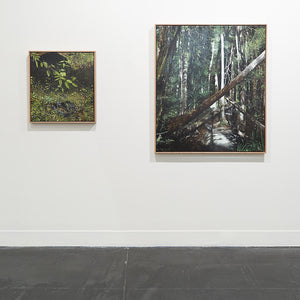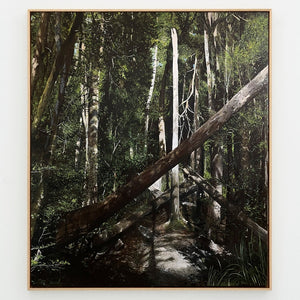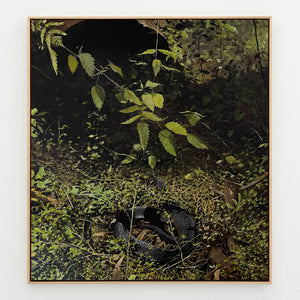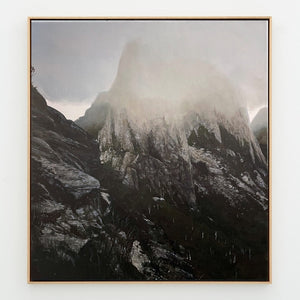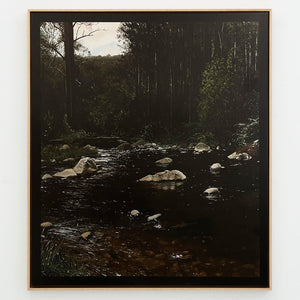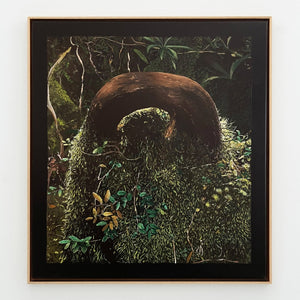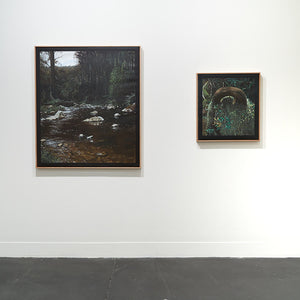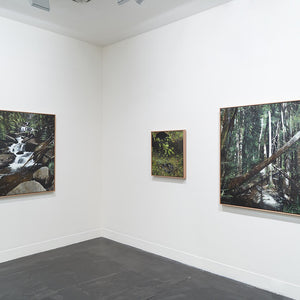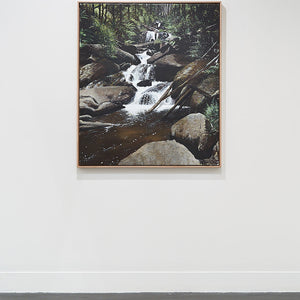Grant Nimmo HOW THE PRISONERS YEARN WHEN THE FORESTS BURN
11 November to 11 December 2021
How the prisoners yearn when the forests burn by Bill Abrahams
There is something unsettling about the landscapes Nimmo depicts in How the prisoners yearn when the forests burn. The crispness and clarity of the works are a call to see the landscape anew, they recall the wonder of the first European colonial artists and viewing these works, it would be easy to believe that the Australian Impressionists and their complicated legacy of nationalism and sentimentality never were. Devoid of any trace of human presence these works allow the landscape the space to speak for itself.
Bones, With love and respect and See me sinking are inspired by Nimmo’s hike through The Franklin-Gordon Rivers National Park, Tasmania in 2016, a site that is the antecedent of continuing battles for conservation. Nimmo uses these works to gently draw our attention back to the fragility of an ancient landscape.
In Bones and With love and respect Nimmo records the natural falling and decay of the bushland and its reclamation by the earth. In recording these small, sacred details of the landscape Nimmo acknowledges their significance, a significance equal to, the sublimity of the Jurassic age quartzite formations of Trullenuer, (Frenchman’s Cap) that he depicts in See me sinking.
There is also something disquieting about Winds of circumstance and If something bad were to happen. In these works Nimmo has again coolly depicted an apparently pristine landscape, a muted but powerful reproach to the continuing ambivalence of the twenty-first century to the natural world.
If there is a polemic to be found in How the prisoners yearn when the forests burn it is clearest in Is Fear Ciúin Mè. In the language of Nimmo’s Scotch ancestors Ciúin Mè translates to my silent tranquillity. Yet in this work the barbed form of an invasive blackberry hangs menacingly over the coiled body of a red bellied black snake and it is unclear which carries the greater threat.
Taken together How the prisoners yearn when the forests burn provides an opportunity for contemplation, underlying these works; however, there is an inescapable note of anxiety over the fragility of their subject matter.
Written by Bill Abrahams

